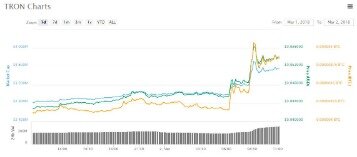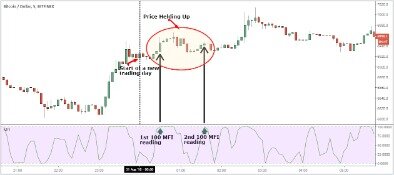a step-by-step guide on how to access your ethw tokens if you held eth before the merge: How $ETH Holders Can Receive Free $ETHW Tokens From a Post-Merge PoW Fork

The ability for anyone to run their own node is absolutely essential to maintaining the decentralization of the Ethereum network. As Mainnet merged with the Beacon Chain, it also merged the entire transactional history of Ethereum. These terminology updates only change naming conventions; this does not alter Ethereum’s goals or roadmap.
- Therefore, all those holding $ETH on-chain will have the same number of $ETHW on the new ETHPoW blockchain.
- After The Merge, the Beacon Chain became the consensus engine for all network data, including execution layer transactions and account balances.
- If the block is valid, the node continues propagating it through the network.
- As Mainnet merged with the Beacon Chain, it also merged the entire transactional history of Ethereum.
- As a result, a full Ethereum node now requires both an execution client and a consensus client.
The Merge was when these two systems finally came together, and proof-of-work was permanently replaced by proof-of-stake. Blocks are instead proposed by validating nodes that have staked ETH in return for the right to participate in consensus. These upgrades set the stage for future scalability upgrades, including sharding. The Merge represents the formal adoption of the Beacon Chain as the new consensus layer to the original Mainnet execution layer.On December 1, 2020, the Beacon Chain was created as a separate blockchain to Mainnet, running in parallel. This completed Ethereum’s transition to proof-of-stake consensus, officially deprecating proof-of-work and reducing energy consumption by ~99.95%. In order to simplify and maximize focus on a successful transition to proof-of-stake, The Merge upgrade did not include certain anticipated features such as the ability to withdraw staked ETH.Not setting a fee recipient will still allow your validator to behave as usual, but you will miss out on unburnt fee tips and any MEV you would have otherwise earned in blocks your validator proposes. Running a non-block-producing node is possible for anyone under either consensus mechanism (proof-of-work or proof-of-stake); it is strongly encouraged for all users if they have the means. Running a node is immensely valuable for Ethereum and gives added benefits to any individual running one, such as improved security, privacy and censorship resistance. The Merge also set the stage for further scalability upgrades not possible under proof-of-work, bringing Ethereum one step closer to achieving the full scale, security and sustainability outlined in its Ethereum vision.
Exclusive: 21Shares President on Huge Success of $SOL and $DOT Products and Why They Use CryptoCompare’s Price Data
Most slots have blocks, but not necessarily all (i.e. a validator is offline). In proof-of-stake, blocks are produced ~10% more frequently than on proof-of-work. This was a fairly insignificant change and is unlikely to be noticed by users. Gas fees are a product of network demand relative to the capacity of the network. The Merge deprecated the use of proof-of-work, transitioning to proof-of-stake for consensus, but did not significantly change any parameters that directly influence network capacity or throughput.

Since The Merge, validators are assigned to secure Ethereum Mainnet, and mining on proof-of-work is no longer a valid means of block production. Up until The Merge, an execution client (such as Geth, Erigon, Besu or Nethermind) was enough to receive, properly validate, and propagate blocks being gossiped by the network. After The Merge, the validity of transactions contained within an execution payload now also depends on the validity of the “consensus block” it is contained within. This would not be possible without first transitioning to proof-of-stake. The APR is also intentionally dynamic, allowing a market of stakers to balance how much they’re willing to be paid to help secure the network.
Use Ethereum
If the block is invalid for whatever reason, the node software will disregard it as invalid and stop its propagation. The Merge was the joining of the original execution layer of Ethereum (the Mainnet that has existed since genesis) with its new proof-of-stake consensus layer, the Beacon Chain. It eliminated the need for energy-intensive mining and instead enabled the network to be secured using staked ETH. It was a truly exciting step in realizing the Ethereum vision—more scalability, security, and sustainability. Proof-of-stake introduced the transaction finality concept that did not previously exist.The other nodes on the network (i.e. the majority) are not required to commit any economic resources beyond a consumer-grade computer with 1-2 TB of available storage and an internet connection. These nodes do not propose blocks, but they still serve a critical role in securing the network by holding all block proposers accountable by listening for new blocks and verifying their validity on arrival according to the network consensus rules. If the block is valid, the node continues propagating it through the network.Since the Shanghai/Capella network upgrade, stakers can now designate a withdrawal address to start receiving automatic payouts of any excess staking balance (ETH over 32 from protocol rewards). This upgrade also enabled the ability for a validator to unlock and reclaim its entire balance upon exiting from the network. Initially after The Merge, stakers could only access fee tips and MEV that were earned as a result of block proposals.After extensive testing, it became time for the Beacon Chain to reach consensus on real world data. After The Merge, the Beacon Chain became the consensus engine for all network data, including execution layer transactions and account balances. The fork, commonly referred to as ETHPoW, will share the same transaction history as the main Ethereum network but start creating its own blocks after the Merge update goes live. Because the PoW fork starts from the Ethereum network’s pre-Merge state, all token balances and smart contracts will also be carried over. This means that everyone holding ETH on-chain will end up having an equal balance of ETHW on the forked ETHPoW chain. ETHW will be native only to the PoW fork and represent an entirely different asset than the original ETH on Ethereum.This allowed the Ethereum blockchain we’re all used to to come into existence in July 2015 with all its familiar features—transactions, smart contracts, accounts, etc. A group of miners and developers are planning to fork the Ethereum blockchain after the Merge upgrade, which is expected to take place between September 13 and September 15, as a result of which $ETH holders could get $ETHW tokens via an airdrop. An important caveat here, full validator exits are rate limited by the protocol, and only so many validators may exit per epoch (every 6.4 minutes).
- Proof-of-stake introduced the transaction finality concept that did not previously exist.
- This would not be possible without first transitioning to proof-of-stake.
- The Engine API requires authentication using a JWT secret, which is provided to both clients allowing secure communication.
- Initially after The Merge, stakers could only access fee tips and MEV that were earned as a result of block proposals.
This functionality was enabled separately with the Shanghai/Capella upgrade. Historically, on proof-of-work, the target was to have a new block every ~13.3 seconds. Under proof-of-stake, slots occur precisely every 12 seconds, each of which is an opportunity for a validator to publish a block.
The Merge and the Shanghai upgrade
If the rate is too low, then validators will exit at a rate limited by the protocol. Gradually this will raise the APR for everyone who remains, attracting new or returning stakers yet again. The transition to proof-of-stake is a critical precursor to realizing this.

Despite swapping out proof-of-work, the entire history of Ethereum since genesis remained intact and unaltered by the transition to proof-of-stake. Any funds held in your wallet before The Merge are still accessible after The Merge. The Merge represented the official switch to using the Beacon Chain as the engine of block production.Instead, the proof-of-stake validators have adopted this role and are now responsible for processing the validity of all transactions and proposing blocks. The Merge marked the end of proof-of-work for Ethereum and start the era of a more sustainable, eco-friendly Ethereum. Ethereum’s energy consumption dropped by an estimated 99.95%, making Ethereum a green blockchain. Throughout Ethereum’s history, developers prepared for an eventual transition away from proof-of-work to proof-of-stake.
Merging with Mainnet
Nodes that propose blocks are only a small number of the total nodes on Ethereum. This category includes mining nodes under proof-of-work (PoW) and validator nodes under proof-of-stake (PoS). This category requires committing economic resources (such as GPU hash power in proof-of-work or staked ETH in proof-of-stake) in exchange for the ability to occasionally propose the next block and earn protocol rewards. Instead, it was reaching consensus on its own state by agreeing on active validators and their account balances.

Originally, the plan was to work on sharding before The Merge to address scalability. However, with the boom of layer 2 scaling solutions, the priority shifted to swapping proof-of-work to proof-of-stake first. Not completing the above items will result in your node appearing to be “offline” until both layers are synced and authenticated. Not completing the first two items above will result in your node being seen as “offline” until both layers are synced and authenticated.These rewards are credited to a non-staking account controlled by the validator (known as the fee recipient), and are available immediately. These rewards are separate from protocol rewards for performing validator duties. As you probably already know, the Merge marks the transition of Ethereum from Proof of Work (PoW) consensus to Proof of Stake (PoS). Therefore, all those holding $ETH on-chain will have the same number of $ETHW on the new ETHPoW blockchain. The following is a simple guide that shows ethereum holders how to access their ETHW tokens using a wallet like Metamask. 16 days ago, Ethereum transitioned from a proof-of-work (PoW) blockchain to a proof-of-stake (PoS) network, and ethereum miners chose to mine a few different coins like ethereum classic and ravencoin.After merging ‘Eth1’ and ‘Eth2’ into a single chain, there is no longer any need todistinguish between two Ethereum networks; there is just Ethereum. Learn everything about staking, how it works, the possible income & start staking.In proof-of-work, the ability to reverse a block gets exponentially more difficult with every passing block mined on top of a transaction, but it never quite reaches zero. Under proof-of-stake, blocks are bundled into epochs (6.4 minute spans of time containing 32 chances for blocks) which validators vote on. When an epoch ends, validators vote on whether to consider the epoch ‘justified’. If validators agree to justify the epoch, it gets finalized in the next epoch. Undoing finalized transactions is economically inviable as it would require obtaining and burning over one-third of the total staked ETH. Ethereum Mainnet – with all its accounts, balances, smart contracts, and blockchain state – continued to be secured by proof-of-work, even while the Beacon Chain ran in parallel using proof-of-stake.This limit fluctuates depending on the number of active validators, but comes out to approximately 0.33% of total ETH staked can be exited from the network in a single day. As a result, a full Ethereum node now requires both an execution client and a consensus client. The Engine API requires authentication using a JWT secret, which is provided to both clients allowing secure communication.



